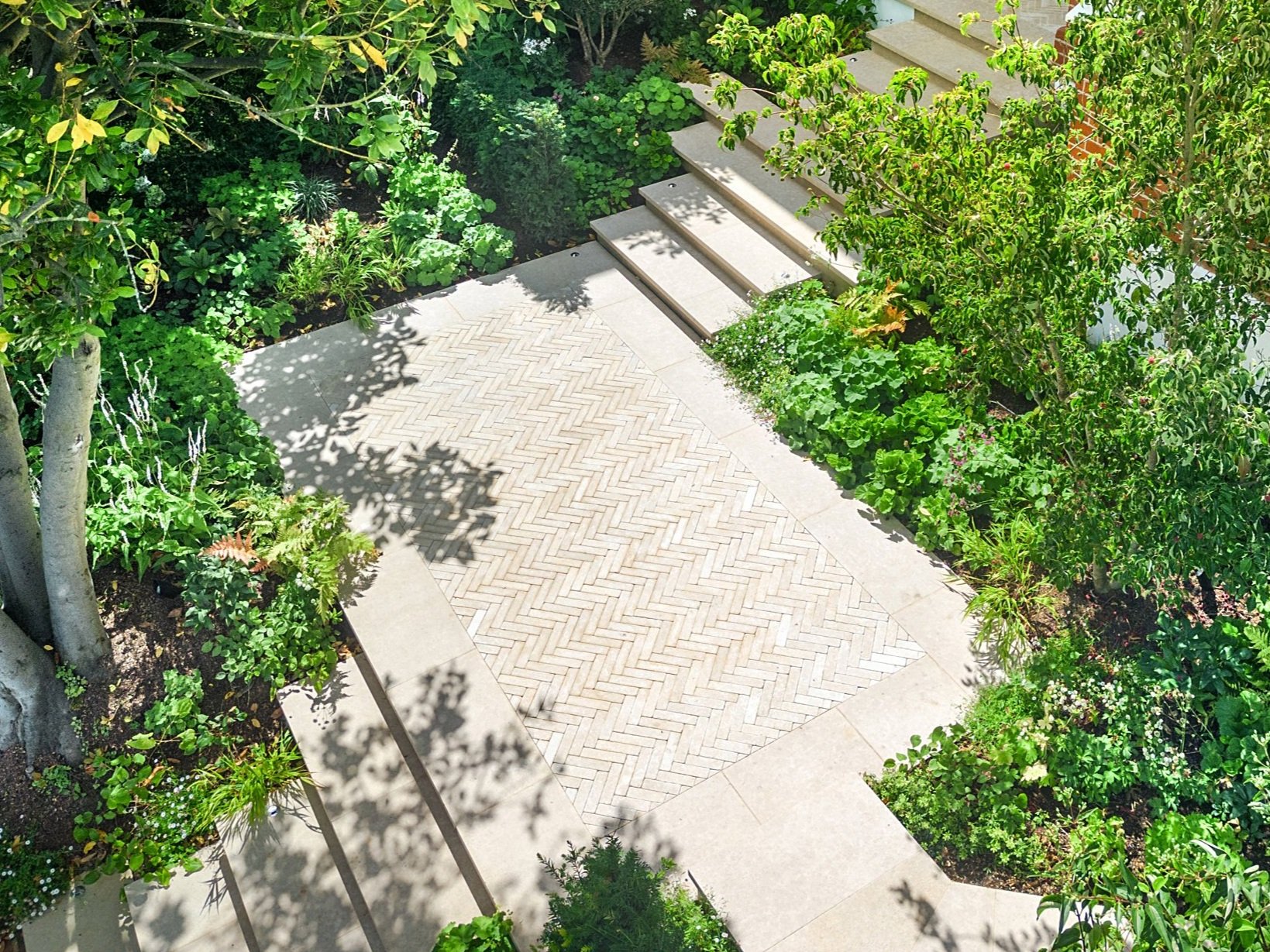stacker® laying guide
NATURAL STONE STACKERS® LAYING GUIDE
Stackers® can be installed on top of sand as well as on top of mortar. For any kind of paving there are specific instructions that should be followed in order to make sure it will function properly. Naturally, Stackers® should be installed with precision.
Installing the Stackers® on a sand base;
Creating the base
Stackers® are usually installed on a sand & cement screed base however for pedestrian traffic a coarse sand base is sufficient. The quality of the screed and sand base largely determines the quality of the final result. Obviously, base requirements depend of the kind of traffic the paving will be exposed to. As such, a garden path will have different base requirements to a driveway, where the sand will fulfil a load-bearing capacity. In the case of a driveway, the sand & cement screed base should transfer and spread the traffic load to deeper layers.
Traffic Category 1 - Pedestrian Traffic Only
Virtually non-load-bearing paving - The required base is a structural membrane on top of soil substrate, a minimum 100mm compacted MOT Type 1 layer levelled and compacted to match the required surface profile of the paving and then 40-75mm Coarse sand layer or sand & cement screed laying of 50mm or more - NOTE: Typically, a mortar comprising 1:4 Portland cement-aggregate (proportions by volume) is used.
Traffic Category 2 - Pedestrian and cycle areas, domestic driveways, small car parks subject to car, light van and motorcycle access.
Paving with very little freight traffic and mainly domestic vehicles up to 3500kg. The required base layer should consist of a full mortar bed with a build up as follows – structural membrane on top of soil substrate, MOT Type 1 layer of 150mm or more - depending on the soil substrate levelled and compacted to match the required surface profile of the paving, a minimum of 150mm concrete base layer and then a sand & cement screed laying of 40mm or more.
Traffic category 3-5
These categories respectively represent medium-strength heavy-traffic paving, high-strength heavy-traffic paving and paving for slow or stationary heavy traffic. The paving subgrade should consist of a MOT Type 1 that complies with the British Highways Standards. The pavers should be installed with proper edge course and the joints should be filled with the right material. The street layer should consist of a full mortar bed.
Stabilizing
The sand base can be stabilized if the road requires heavy-duty foundations. In case you want to apply stabilization, make sure you also install sufficient drainage. The sand base can be mixed with hydraulic additives such as cement or hydraulic lime. As a general rule 125-150kg of additives should be added to every mᶟ of sand.
Drainage
As much as possible, rainwater should be drained across the surface of the paving. To promote this, and to avoid traffic hindrance from a layer of water on the road, the paving should be installed in a slope. Generally, paving is installed sloping sideways, so that water will drain to and off the sides. For larger areas such as squares, gullies should be installed. The surrounding pavers should then slope towards the gullies or curved drainage channels that will lead the water to the gullies.
expansion joints
Expansion joints should be included within the base and surface course layers at spacings of up to 80m where construction is undertaken during winter months and up to 160 m where construction is undertaken at other times. Consideration should also be given to the inclusion of expansion joints at changes in gradient where an accumulation of stresses could cause buckling. Expansion joints should be in accordance with BS 7533:101:2021.
ISOLATION JOINTS
Isolation joints should be provided between rigid bound pavements and adjacent features (e.g. buildings and drainage channels) to prevent load transfer.

